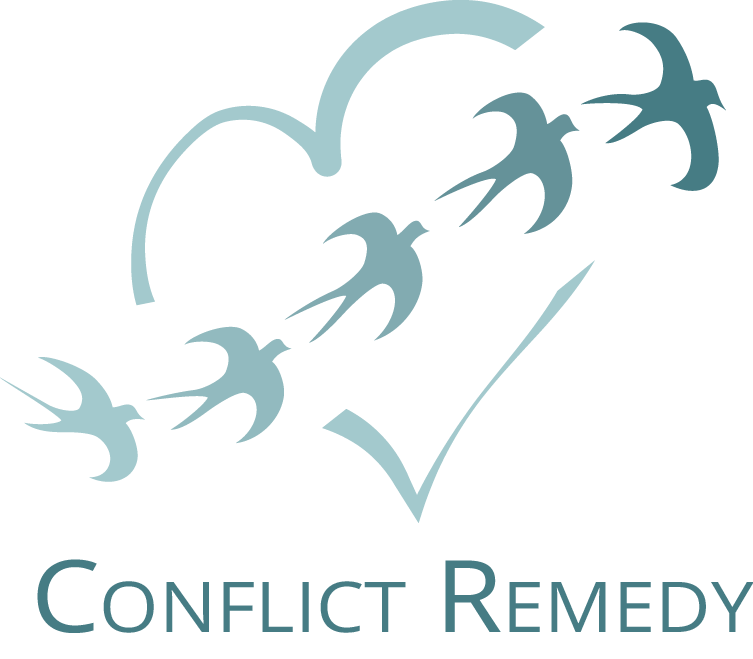
Photos by LOGAN WEAVER | @LGNWVR and by Bonnie Kittle on Unsplash
Culture eats policy for breakfast—Dr. Katina Sawyer.
A number of workplaces these days have beautiful mission statements and written policies that promote effective conflict resolution, fairness, kindness and equity. But as Dr. Katina Sawyer, Associate Professor of Management and Organizations at the University of Arizona, Eller College said when she was a guest lecturer at my conflict management certificate program, “Culture eats policy for breakfast.”
What does this mean? No matter how eloquent or appropriate stated policies are, if leaders in an organization don’t make a commitment to transformation, and put sustained effort, intention, education, and follow through into making the policy or vision real, the culture will remain the same and the mission statement stays merely a piece of paper. In other words, changing a policy without changing thinking and behavior and culture will have no impact.
How can an organization make cultural changes real? Here are a few guidelines:
- Release the fantasy of a quick fix. Many organizations have wanted to hire me for an hour or two, hoping that a quick workshop or coaching session will solve all their conflict or equity issues. One workshop can plant seeds of change, and can point an organization in the right direction, but it is impossible to shift organizational behavior in such a short time. I gently break this news to them, and some are willing to make a bigger commitment to the work, while others keep looking for a magic quick fix.
- Aim to change people’s hearts, minds, behaviors through increased awareness, enhanced compassion and practical skill building. At the beginning of a training series, I tell participants that I have a simple goal for the training: to change people’s hearts, minds, and behaviors. I am perfectly serious, but we all laugh because while this may be a simple goal, it is not easy. It starts with leaders, but must grow to include everyone.
- Establish and follow the Three “P”s—Policy (written statements), Process (What, Who, When), and Procedure(How and Why) Adding process and procedure helps the policy become real.
- Add a fourth and fifth “P”—Practice and Persistence. It takes repetition, reinforcement, determination, trying again after a failure, to change the culture.\
- Value and support a learning culture that respects everyone, honors curiosity, makes room for mistakes, and builds resiliency. The Latin philosopher Epictetus famously said, “It is impossible to learn that which you think you already know.” One way for an organization to show this, is to incorporate these qualities into hiring and promotion decisions and evaluation of leaders. How well do they demonstrate this?
How can you start making these changes?
Krista White, the founder and CEO of Kiki For The FutureTM and the co-founder of Culture Design Lab, recommends starting with a culture audit. It isn’t possible to change a culture effectively without looking at what exists right now. This includes looking at HR and how it functions, examining all current policies and procedures, surveying employees and leaders at all levels about their experience at the company or organization.
Across many industries, dysfunctional cultures at corporations and organizations impede the mission, cause many employees and leaders to leave or not bring their best to work. Shifting the culture is in no way easy, but engaging in this work, gently persisting through resistance can bring a richness and joy to the workplace that we all sorely need.
 Lorraine Segal has helped over 2000 leaders and others in organizations and corporations communicate more clearly, transform conflicts, and let go of resentments. The goal: to create a more harmonious and productive workplace. Through her business, Conflict Remedy, Lorraine creates customized training and coaching programs for non-profit organizations, corporations, and government agencies and Sonoma State University. She was recently named one of the top 15 coaches in Santa Rosa by Influence Digest. She is a contributing author to the book, Stand Up, Speak Out Against Workplace Bullying. Her latest project, a memoir called: Angels and Earthworms, an unexpected journey to love, joy, and miracles, is about her transformation from miserable self-doubt to self-acceptance, true love, spiritual awareness, and right livelihood. Find out more about the memoir here. Contact Lorraine through ConflictRemedy to request a free consultation for you and your organization or to sign up for her conflict remedy newsletter and blog.
Lorraine Segal has helped over 2000 leaders and others in organizations and corporations communicate more clearly, transform conflicts, and let go of resentments. The goal: to create a more harmonious and productive workplace. Through her business, Conflict Remedy, Lorraine creates customized training and coaching programs for non-profit organizations, corporations, and government agencies and Sonoma State University. She was recently named one of the top 15 coaches in Santa Rosa by Influence Digest. She is a contributing author to the book, Stand Up, Speak Out Against Workplace Bullying. Her latest project, a memoir called: Angels and Earthworms, an unexpected journey to love, joy, and miracles, is about her transformation from miserable self-doubt to self-acceptance, true love, spiritual awareness, and right livelihood. Find out more about the memoir here. Contact Lorraine through ConflictRemedy to request a free consultation for you and your organization or to sign up for her conflict remedy newsletter and blog.
Related Blog posts:
Does Your Workplace Promote Psychological Safety?
Three Common Ways Conflict Shows Up in Organizations
© 2025 Lorraine Segal ConflictRemedy
